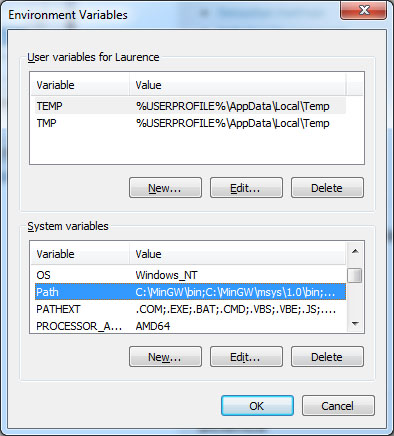

- #Eclipse ide with gcc for mac install
- #Eclipse ide with gcc for mac software
- #Eclipse ide with gcc for mac download
#Eclipse ide with gcc for mac software
Click ‘Next’ until the wizard successfully installs and/or updates everything (in my case, all the software was already installed, so it just updated). Expand ‘CDT Optional Features’ and select ‘GCC Cross Compiler Support’. In the ‘Available Software’ window, select the last entry in the ‘Work with:’ dropdown. Search for ‘cdt’ and select the one checkbox that pops up. In the menu, go to ‘Help>Install New Software…’ then click on the ‘Available Software Sties’ link. Note that the compile commands (CC=clang make… and make cross-gdb take a LONG time, go grab coffee).ĬC=clang make cross-binutils cross-gcc cross-g++ cross-newlibĬonfigure Eclipse. Launch Terminal from /Applications/Terminal or spotlight and enter the following commands, preferably one at a time. We’re going to use the arm-eabi-toolchain builder from James Snyder.

When prompted for a workspace directory, add ‘stm32f4-discovery-projects’ to the path just before ‘/workspace’, as below: Set your path tar.gz, and copy the ‘eclipse’ folder to /Applications, as you would with any other Mac app.

#Eclipse ide with gcc for mac download
From here, download the Mac Cocoa 64-bit version of Eclipse for C/C++ developers.
#Eclipse ide with gcc for mac install
Sourcery G++ Lite 2011.03-42 for ARM EABI Source TAR – jsnyder packageġ. Download and install Eclipse. downloading these now, they can take a long time. STM32F4 DSP and standard peripherals library Indigo R Eclipse IDE for C/C++ Developers (Mac Cocoa 64-bit) Prerequesites: you’ll need Apple’s developer tools ( Xcode), a package manager for *nix programs (instructions given are for homebrew, you could probably use macports if you really want), and git. I’m going to mash up a few different existing tutorials to do this, starting with this excellent tutorial for setting up this same toolchain, but for the original STM32VL Discovery and on Windows. We’ll pair that with the open source IDE Eclipse (standard for most open source and commercial development toolchains alike), and then weave in ST’s tools like ST-LINK/V2 to fill in the gaps. So what do we do?! Luckily, the single most developed compiler out there is open source, GCC! We’re going to use a commercially-developed open source compiler, Mentor Graphics’ Sourcery CodeBench Lite edition. For some that will be fine, but I’m certain I’ll find that annoying. Of those, only Atollic and IAR have free versions, where IAR is 32 KB limited (the M4 has 1MB flash), and where Atollic is neither time nor size limited, but doesn’t support C++. There are 4 proprietary (and EXPENSIVE) toolchains supported, Altium TASKING, Atollic TrueStudio, IAR Embedded Workbench for ARM, and Keil MDK-ARMT. 1″ headers.īut alas, the software stinks. The bottom half contains the M4 and a host of fun peripherals to play with, including a 3-axis MEMS accelerometer, an audio DAC with class D output driver, a bunch of LEDs, and all GPIOs broken out to. In typical ST fashion, the development board is awesome – it’s got a built in ST-LINK/V2 programmer and in-circuit debugger on the top half. The really interesting new feature is the ‘F’ in the name – this is the first low-cost, low-ish-power light duty microcontroller to include a built in, single cycle per instruction 32-bit floating point unit. ST Micro in the last few weeks was the first to market with the brand new ARM Cortex-M4 32-bit microcontroller core.


 0 kommentar(er)
0 kommentar(er)
